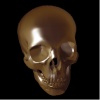I've been looking for a quick and easy way to load in a model of a person and animate them for a simulator I'm working on.
Oh before I forget, I'm using DirectX 11.
I've been looking at the SDKMesh class in DXUT as it seems the fastest simplest way for me to achieve this, but I'm a little confused over the vertex format stuff.
I've looked at a few different examples using the class and each has a different, seemingly global, vertex format, but they all use the SDKMesh class. E.g. the old multi-animation example only has position and texture coordinates, but in the DXUT tutorials they add the normals as well. I'm new to dealing with meshes loaded from file in DirectX, I'm usually hard coding spheres for examples
Does the SDKMesh class deal with the vertex format separately - or is it that the vertex format is embedded in the .sdkmesh file, and you have to mirror it in the code??
I notice that the intel multi animation example using threaded building blocks includes some animation data as part of their vertex format and yet in the folder structure I can see an sdkmesh file - presumably the actual mesh - and an sdkmesh_anim file - which I assume is the animation data. I'm just wandering how they all deal with this....
This isn't something I'm interested in programming at the moment, nor do I have the time - my uni deadline is fast approaching :s
Basically I need a way to call load on something to get a mesh and call animate on it to make it move
Sorry its a bit disjoint - I'm not really sure how to ask what I need :s
Hopefully you'll understand
Thanks very much!!




